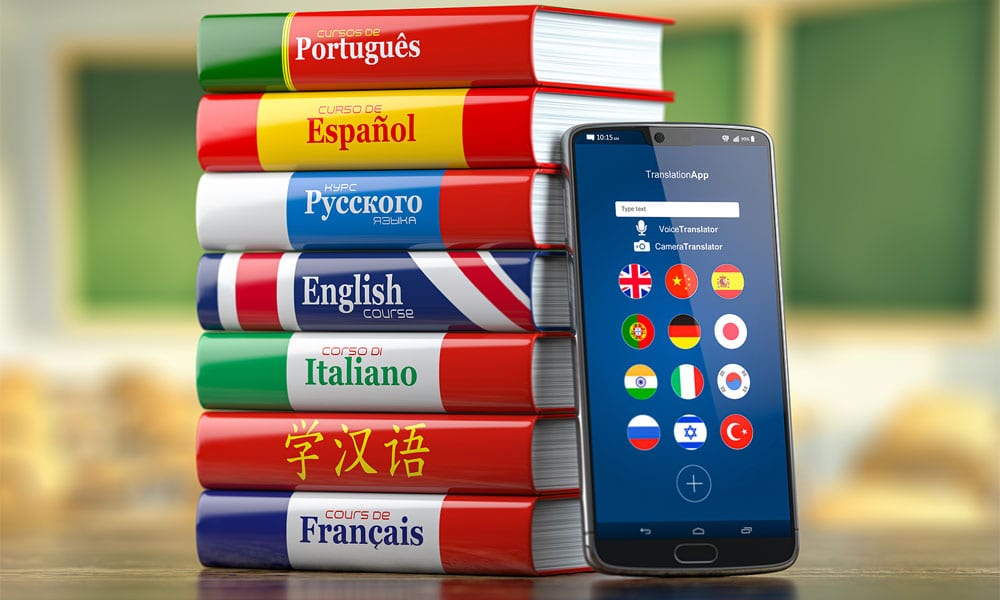Gamification and learning analytics in second language acquisition
- Language Apps -
by Maria Strange
Language Learning Apps are part of the new mobile landscape anytime-anyplace for foreign language learning. According to researches mobile devices have an extremely positive effect on language acquisition and it should be implemented in teaching and learning a language. In order to maximize the potential of mobile devices, it is recommended to combine learning with games and game elements in a gamification formula. This use of mobile devices and tablets is also generating a more advance formative feedback within the communities of learning analytics and educational data mining.
Some of the benefits claimed by language gamification apps are that they reinforce repetition and mnemonics, add clear grammar explanations, provide cultural insights, build language communities, facilitate speaking practice, allow peer correction capabilities, monitors progress to help achieve proficiency, help with written language correctness, scaffold the learning progress, focus on improving language weakness, and provide instant voice and text translations.
However, one of the main affordances of gamification is the ability to incite motivation. We know motivation plays an important role in foreign language acquisition and gamification can be a promising trend to engage learners in interactive language learning.
So, if games and technology have been successfully present in the languages classroom for decades, what is innovative in the way this new language development supports learning? Why these apps have been so popularly adapted among language learners? And are they really helping learners to acquire languages faster and more efficiently?
The limitations to create real and authentic experience in the formal environment of the classroom seem to be driven learners to informal learning where language apps can add better authenticity to the context. Added to this, there is the capability of technology through learning analytics to provide them with personalised content and the power of ubiquity to allow increased practice. Language Apps use adaptive learning technology which can customize instructional material for the user and equally can inform instructional designers to adapt the material for the learners in general.

Language learning has used game as pedagogical tool in the past, but to conceive game as a pedagogical tool implies, according to Piaget, understanding that through the playful components you learn and internalize content, skills and behavioural patterns. Gamification tries to mimic a game situation where the aim is to target the emotional level of the learner through entertainment.
According to Chomsky and Hymes, in language learning the more real the experience created the more intrinsic motivation awakes. Learning analytics can use large amount of data about user interactions to provide learners and teachers with monitoring and track performance and give learners a more active role.
In this respect, the innovative concept is then feeding back the data draw from the gaming simulation to create the educational experience. Shaping gamification within the formal language learning should be the new aim. Today’s technology has the ability to bring the native language experience to the classroom. The challenge is to be able to incorporate gamification into the language classroom not as a pedagogical reinforcement but as the main pedagogical medium
Using technology as a learning environment allows us to obtain large amount of data about what happens during the learning process. However, we merely monitor visible behaviours from where we are trying to evaluate insights about the principles of learning. It is important therefore that we also apply support strategies in order to expand or narrow the spectrum of data to be collected. For example, one of these strategies can be gamification, where the result of advanced learning analytics can link the learner behaviour closely to aspects of the student’s motivation through interactions with technology-based learning activities.

The term gamification was coined by Nick Pelling in 2002 but it did not become very popular until around 2010. As Werbach and Hunger explain (For the Win: How Gamification Can Transform Your Business, 2012), gamification applies dynamics and mechanics of the game to problem solving in a non-gaming context. Problems of distraction, inactivity, non-understanding, complexity of task, etc. are trying to be solved with gaming elements such as setting goals, theme and story, awarding points for participation, ranking performance, introducing conflict, strategy and decision making, media aesthetics, real-world simulation, learning by doing, user driven, sense of accomplishment and social elements. In addition, gamification encourages motivation and engagement towards the learning process by inspiring cooperation, curiosity, self-image, autonomy, error tolerance, etc.
There seems to be no doubt Gamification can bring real value to the learning of a language. However, as the report ‘Gamification and the Future of Education’ by Oxford Analytica, states, gamification is not a universally technique. Certain factors can raise potential concern if they are not monitored closely such as institutional support, level of engagement, correct mechanism selection, feasibility, student interest and misaligned objectives. The report also claims that as this field is still under expansion there is not yet a definite best practice that can successfully be implemented. What is important is applying the main principles of gamification to the existing curriculum. The transformation that the digital education is doing in education is still developing and within it language gamification seems to be evolving fast.